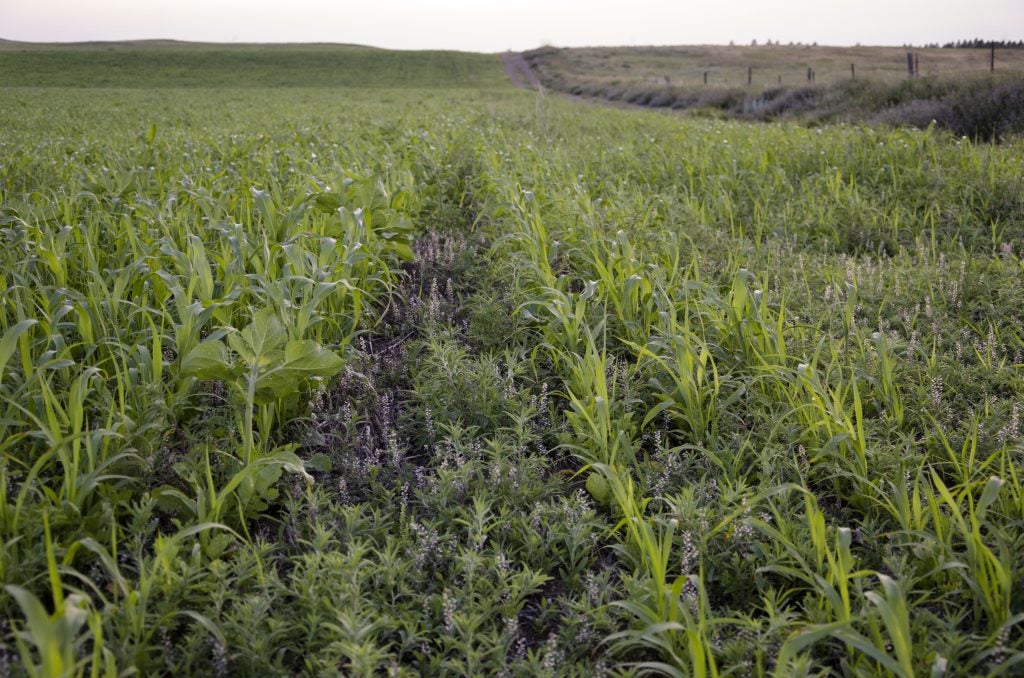As the struggling U.S. farm economy continues to make the news, agricultural organizations, government agencies and conservation groups are rightly focusing their attention on the affordability of conservation adoption.
A 2018 report from EDF and agricultural accounting firm K·Coe Isom, Farm Finance and Conservation, found that farmers who adopt conservation practices such as no-till, nutrient optimization, cover crops and diverse rotations improved their profitability and were more resilient.
Despite these benefits, the costs of transitioning to conservation management practices can be a barrier to adoption. In addition, any change carries some risk, and farmers are likely to be reluctant to take on additional risk in the current economic climate.
For these reasons, it is more important than ever to provide farmers with practical guidance on how to minimize the costs and risks of conservation adoption. Fortunately, a new technical bulletin from the Sustainable Agriculture Research and Education (SARE) program at the U.S. Department of Agriculture does just that.
Cover Crop Economics: Opportunities to Improve Your Bottom Line in Row Crops [PDF] describes seven different management scenarios in which farmers can speed their transition to cover crops and achieve profitability more quickly — in some cases within the first year of adoption.
Integrating cover crops into holistic farm management
Not only does the bulletin focus on cover crop adoption, but it also shows how cover crops can be integrated with other opportunities or challenges on the farm, providing a holistic look at the adoption decision.

Corn with cover crop mix. Photo Credit: USDA NCRS
For example, the bulletin describes how farmers can use cover crops to address problems such as herbicide-resistant weeds and soil compaction. It also addresses how farmers can use cover crops to speed up and ease the transition to no-till, or incorporate a grazing business into the farm operation.
These opportunities add up. The bulletin estimates that corn farmers who adopt cover crops to address herbicide-resistant weeds make a profit of $29 per acre by year three of adoption and $45 per acre by year five. Farmers who integrate grazing will make a profit of $18 per acre in year one and $67 per acre in year five.
Cover crops benefit farmers’ business partners
The bulletin is primarily directed toward farmers and farm advisers, but it can also be a useful tool for farmers’ finance providers and landowners to understand how agricultural conservation impacts farmers and their own bottom lines.
For example, agricultural lenders could share the bulletin with farmers to inform their conversations about fitting conservation adoption into the farm’s financial plan. Similarly, the bulletin could serve as a useful resource for farmers and landowners in discussing the benefits and costs of conservation adoption, and how to equitably share investments in the land. New guide shows how to make conservation work in a tough farm economy Share on X
Capturing the financial benefits of conservation
While the bulletin is an excellent first step towards holistically addressing the kinds of economic returns that can be expected from cover crops, there’s more work to be done.
Moving forward, farm record keeping systems and management software must gain the ability to track these financial benefits, as well as the environmental benefits, at the farm level. This will allow farmers to monitor their progress and fine-tune their management systems as they go.
With the many economic and environmental challenges farmers currently face, there is an increasingly important role for agricultural lenders, crop insurers and landowners to integrate the financial value of conservation into their own business practices and policies.
Doing so will help shape an agricultural system that ensures that the farmers who take care of our natural resources over the long term also have the most sustainable businesses.









